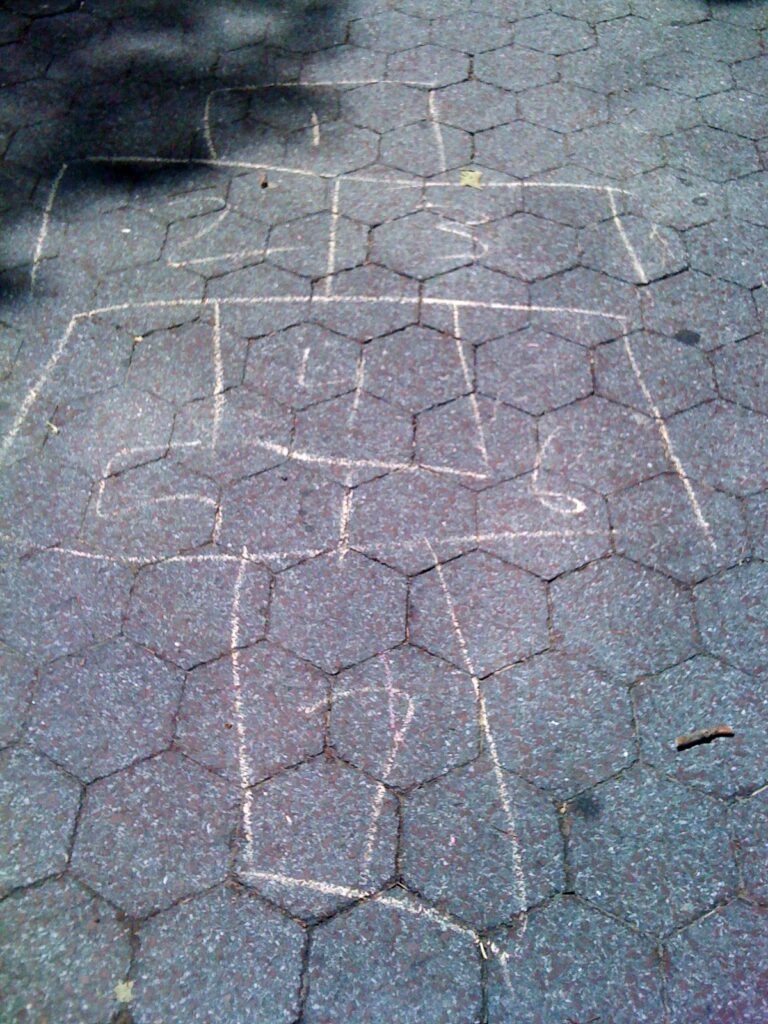
For my book opinions and fledgling comics, subscribe to my always free newsletter, How to Play Hopscotch. You can also read archives there.
Sign up at megin.substack.com.
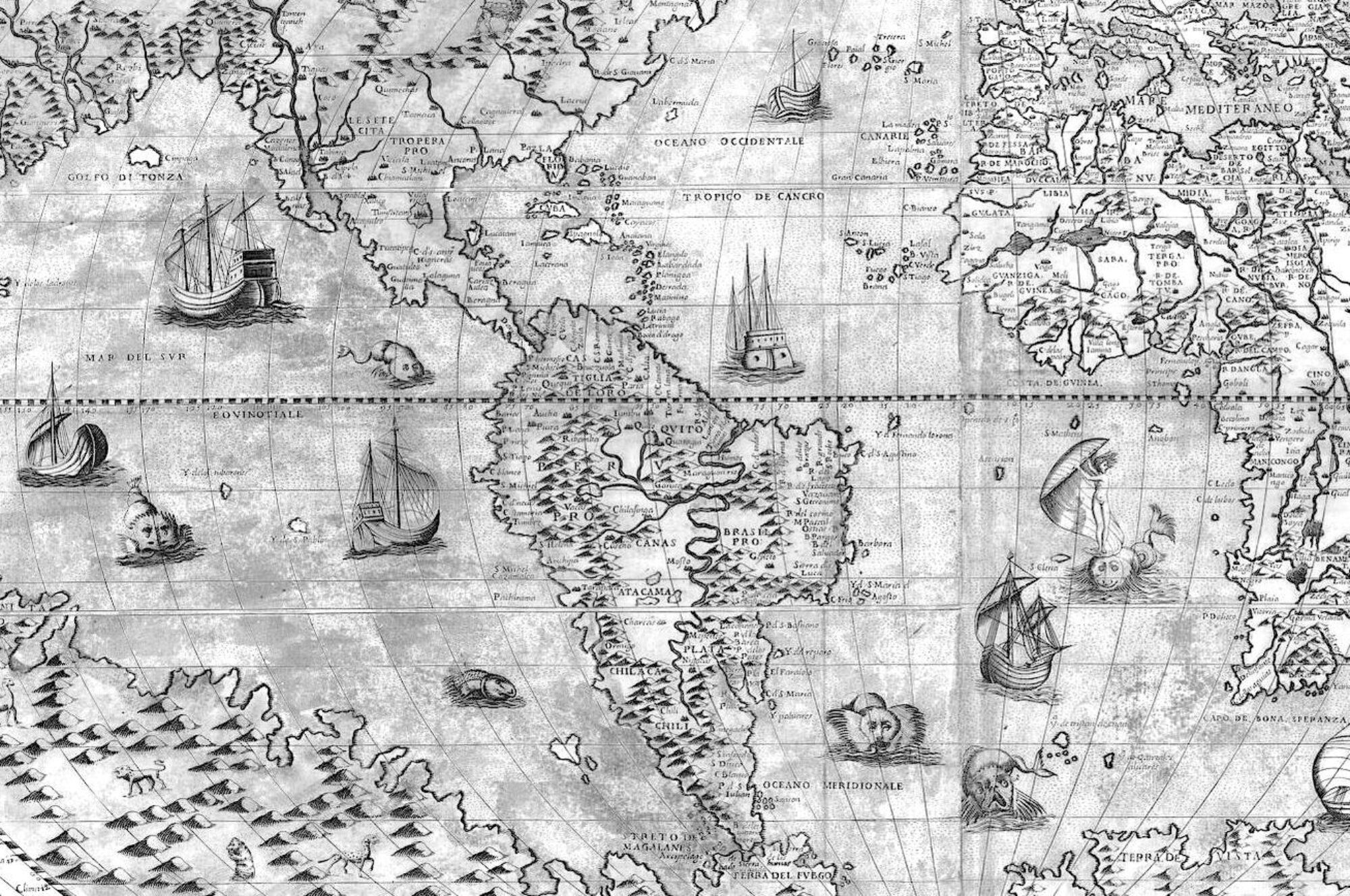
Writer, editor, translator

For my book opinions and fledgling comics, subscribe to my always free newsletter, How to Play Hopscotch. You can also read archives there.
Sign up at megin.substack.com.
I found myself re-reading several favorite books last year, especially in the beginning of the year. This wasn’t a deliberate decision; I think was a way to find direction (the direction of my thoughts, writing, way of thinking). It’s also a heartening confirmation that I’m not keeping all of these books, carting them across oceans and to different apartments over the years for nothing – I will get back to many of them…
I haven’t included these in my ranking as it’s not fair to the books read for the first time, and it’s also impossible to determine any sort of preference among these – I value them all, but often for very different reasons. Five re-reads listed below in the order read.
RE-READ
Things I Don’t Want to Know by Deborah Levy (Notting Hill Books, 2013)
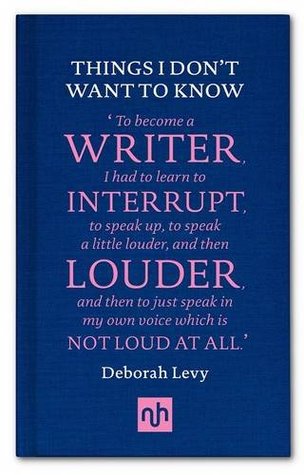
Playwright and novelist Levy’s account of her “origin story” as a writer, a response to Orwell’s essay “Why I Write.” It’s short, honest and powerful. This was my second read. I fell in love with this book in 2017.
The Lover by Marguerite Duras (Pantheon, first published 1984)
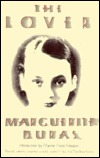
This was my third or fourth time reading this novella. It’s a guiding light of what can be accomplished in some 120 pages. Incredible compression, a whole life. My first read, I was around 20, and I was impressed by the assurance in the narrative voice and stunned by single paragraphs at a time, which were like incredible poems (the paragraph describing the narrator’s unstable mother attempting to raise chickens, the house falling into ruin, for example). The second time I realized how much it was a devastating love story about her mother, more than about the older man. This time I was more aware of Duras’ autobiography in the work, the kind of strength and defiance it takes to write through pain in this way. Again amazed by the authority in the voice, how I wouldn’t question it despite the drama (melodrama?).
I’ve been thinking about literary works I can’t “recover” from – their initial impact is so great, it’s hard to move beyond them to other works by the author. I just want to re-read the one, swim around in it, never move on. (Rather than happily diving into their whole oeuvre, which happens with other works.) This is one of those books. I own a couple of other novels by Duras but haven’t touched them, but maybe it’s time.
Susan Sontag: The Complete Rolling Stone Interview by John Cott (Yale University Press, 2013)
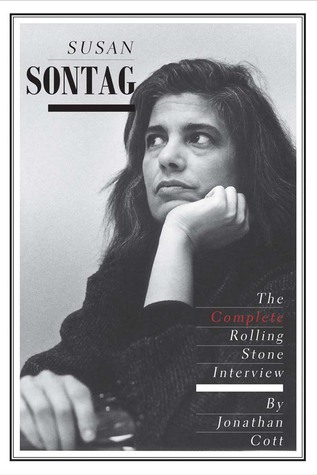
This book-length interview is bursting with ideas and questions from genius Sontag, it could certainly be read multiple times. The thought that stuck around with me this time is Sontag’s insight into the fragment – why the fragment is so compelling to us. It’s a sign of an old civilization, where so much has accreted that a fragment (whether visual or textual) can resonate with so much meaning… More thoughts on this book when I last read it in 2017.
Speedboat by Renata Adler (NYRB Classics, 2013 reprint, first published 1976)
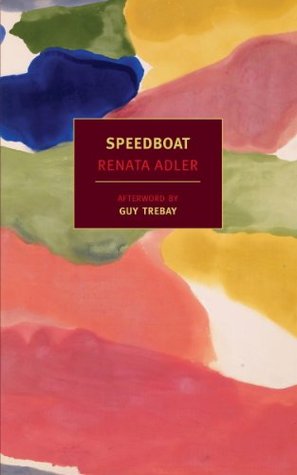
You could carve at least two completely dazzling prose poetry collections out of this experimental novel. Adler puts some lazy poets to shame by collecting all of this inventive, delicious prose into a single work. And it is indeed a novel, not in an explicit way, but there’s a protagonist, you get a sketch of her biography, her love life. It’s atmospheric – a paranoid, hung-over, sweltering, wayfaring existence in New York in the 1970s.
Anecdotal, minor gossip digression: I was lucky enough to see Adler at the Center for Fiction in 2014, when she had her big comeback and NYRB reprinted her work. She was shy and self-deprecating. Eileen Myles was in the audience and during the Q&A she essentially asked Adler why she was apologizing herself, took issue with her self-effacing manner. I didn’t really think about it till I got home, as I was excited that Eileen Myles was even there, but it dawned on me that Renata Adler should be allowed to talk however she wants, what kind of question is that?…
Also, when I went up to get my books signed, Adler said my name looked like the word “begin,” and signed them “To Begin–” which I love.
My Life in France by Julia Child and Alex Prud’homme (Knopf, 2006)
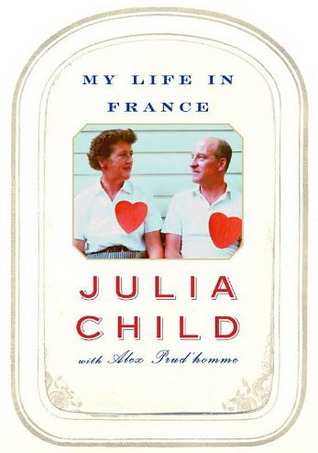
I think I picked this up to feel better last summer. Julia Child reminds you about everything that’s great about being alive, or maybe she makes everything about being alive seem great — travel, eating, marriage, work. That’s what struck me about this read, her supreme dedication to her work, her gratitude for discovering what she really loved to do. I also realized on this read that maybe classic French food is not for me, either to eat or cook — so rich, so meaty, so many organ meats, so many elaborate preparations…
ABANDONED
The Waves by Virginia Woolf
Woolf’s fiction is a big gap in my reading; I’ve only read Mrs. Dalloway (which was and remains important in to my reading/writing life). I must confess I abandoned The Waves just a few pages in, not because of the stream-of-consciousness style, but because it immediately introduces six characters who alternate speaking on every line. Many names on pages 1-2 immediately puts me off a book. I’ll have to return to this when my mind is calmer, maybe in like 20 years or so…
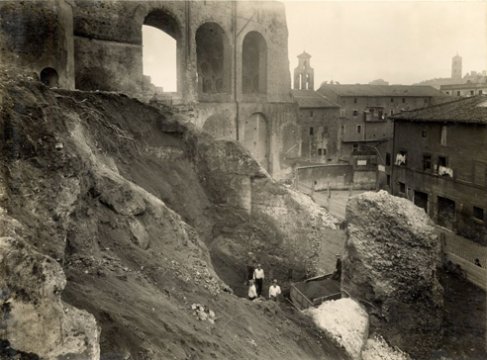
The scales have tipped. The glass is overflowing. I’m not sure when the drop that caused the overflow happened, but it feels different now, the fact of women’s writing, women’s words in the world. As a child, a teenager in school, I felt the general tokenization of women. I received by osmosis (from textbooks, from teachers), the sense that “women writers” needed to be included in curricula to fill a quota, but that they weren’t quite as good as the writers that didn’t require a modifier (male writers).
Then, when trying to write, learning to write, there was the sense, also transmitted by teachers, anthologies, peers, that I should try to write to fit in with the men, to impress the men in the room, in the canon, at the publishers. Gradually, this fueled a rebellion and I wanted to read only women, discover women’s writing that wasn’t anthologized or talked about in institutions, and write like a woman (whatever that means, if anything). But this felt like a kind of isolation, marginalization in my reading and writing life. [The usual disclaimer: I’m writing from a mostly English-language, mostly American perspective…]
But the chauvinism isn’t a given now. The rejection of it is palpable! Women writers are becoming just writers, no modifier required. Joan Didion is the aspiration, not Norman Mailer. Women, who comprise the majority of fiction readers, now number among the critics. So many more varied women’s voices are being published, on a large scale, by major publishers, from mass market to literary. That’s not to say there’s still not a way to go, of course. This is the beginning and it feels great.
What’s struck me recently is that not only are new voices being published, but women writers from the past are being resurrected and appreciated. In the U.S., Eve Babitz, Lucia Berlin, Clarice Lispector, Elizabeth Hardwick, Penelope Fitzgerald, Renata Adler have all had a recent renaissance as major literary figures of the 20th century. (Parul Sehgal of the New York Times wrote an interesting piece about this phenomenon and paying attention to what caused the vanishing in the first place.) Not only was Zora Neale Hurston’s book on a former slave published in 2018, 90 years after it was written, it got a surprising amount of ink when it did (History.com, NPR, The Huffington Post, The New Yorker, The Daily Mail!).
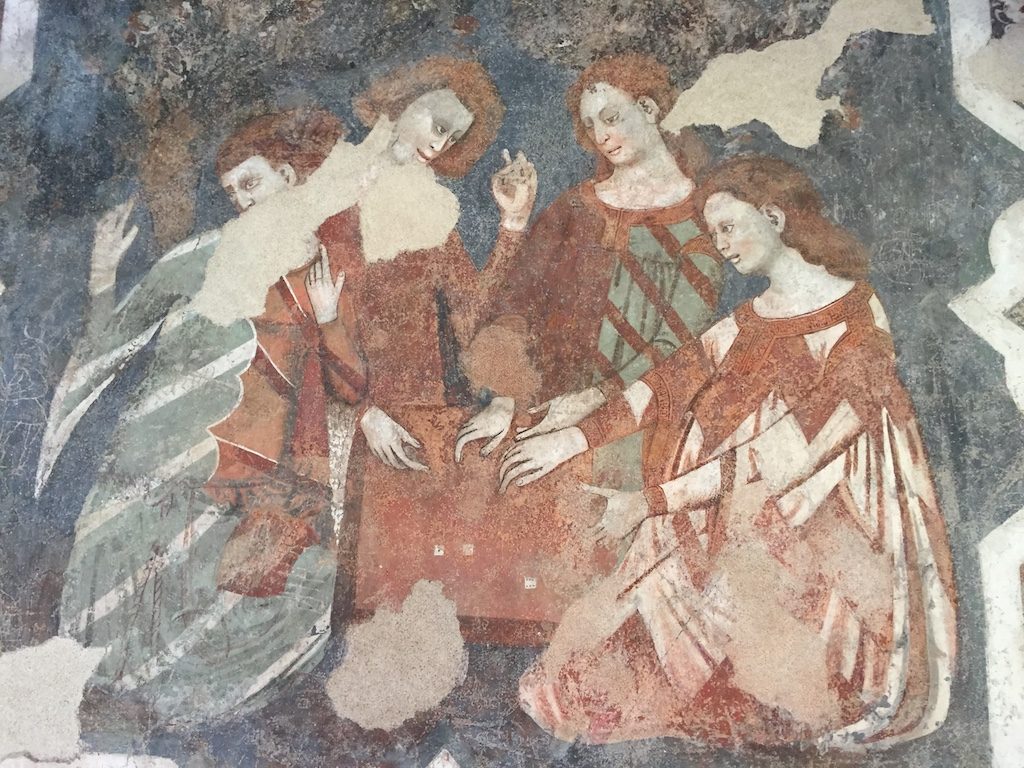
I’ve been thinking of all of the Modernist women I skipped over in my education, whose work I still haven’t read. I was reading T.S. Eliot, William Carlos Williams, Ezra Pound hungrily, but skipped over Mina Loy, H.D. I didn’t know about Djuna Barnes, Kay Boyle, who were there all along, drinking and smoking with the dudes, and writing, too.
As someone with an interest but no particular expertise on visual art, I’ve been peripherally aware of a similar tendency in that realm, as well. I was delighted by Peter Schjeldahl decrying the title “Woman Impressionist” of the big 2018 Berthe Morisot show at the Barnes Foundation in Philadelphia (“a great artist who is not so much underrated in standard art history as not rated at all”). There was the recent astounding Hilma Af Klint show at the Guggenheim. She was painting abstract forms in the early 20th century on her own, as part of a spiritual search, long before Kandinsky, and didn’t want to be shown in her time for fear of being misunderstood. There was Yayoi Kusama’s triumphant, late-career world domination, beginning with the blockbuster show at the Hirshhorn in 2017. A big Frida Kahlo show now at the Brooklyn Museum. Joan Mitchell’s work setting auction records. (I’d never heard of her before last year, but of course had heard of de Kooning and Pollock.) I’ve seen lots of Artemisia Gentileschi’s images pop up all over the Internet. Hopefully the art history books are being rewritten. These people, their work, have been there the whole time.
I don’t have the same evidence, but a sense or hope that this transformation–the recognition of women who were there all along, making history and culture–is happening in other areas, too, ones that I track less, like comedy, film, food, and science.
This resurrection of women from the past makes me think of an ancient civilization that’s discovered beneath the living city. It was there all along. We are excavating, removing the layers of dirt that was dumped on women’s work. We’re carefully lifting it up, dusting it, examining it, valuing it, attempting to connect it to other fragments. We’re realizing, too, what’s been lost and can’t be recovered.
Evidence of this past civilization goes even further back. I don’t know why we’ve assumed it was only men drafting illuminated manuscripts, sculpting goddess figures, painting on cave walls, but we do, I do. We need scientific proof that it was possible women were doing these things, otherwise we don’t believe it, can’t picture it. I saw several articles making the rounds recently about flecks of blue lapis lazuli being found in the teeth of a 1,000 skull of a nun in a German monastery. It’s evidence that women, too, created beautiful illuminated manuscripts. There’s scientific proof that most cave paintings were done by women. And there’s the theory that “the first images
of the human figure [fertility goddesses] were made from the point of view of self rather than other” and “Paleolithic ‘Venus’ figurines represent ordinary women’s views of their own bodies.”
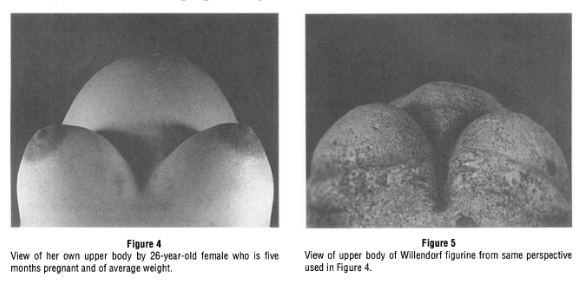
The uncovering of women’s part in our civilization and culture isn’t a physical discovering. It’s been there all along. We covered it up and made ourselves blind to it. We have to remove the layers of dirt from history books, museums, our own minds and consciousness…
The part of us that reads poetry is a reflex part. Men read poetry with their reflexes the same as women do—they put themselves in your trust, they put their bodies in your hands, you tap the right place and the leg kicks. Or the pupils dilate. Or the hackles rise, and something flies out of you on a flock of little red nerves. To feel power shift out of your body is uncomfortable. It makes you feel that it was never yours to begin with. That’s the whole point; that’s the subject here; and maybe what we are seeing is that it is more difficult for men—to recognize that they’re in someone else’s hands, to recognize that they’re at someone else’s mercy, when the author’s touch feels different, when the poems are these poems.
Patricia Lockwood, in this interview, responding to a question about male readers being made uncomfortable by her work… A great definition of what it means to be a reader of poems.
In 2012, I read 27 books. Here are numbers 11-18 in the order most to least inspiration, pleasure, ideas and word-love derived from.
(11) Are You My Mother? (2012) – Alison Bechdel
I don’t think this should be read without first reading Bechdel’s other graphic novel/memoir, Fun Home. I would call this a companion read. She frequently states that it’s a book about her mother, but it’s really a book about her relationship with her 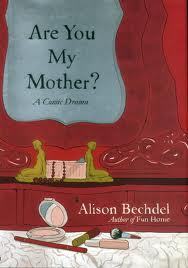 mother and coming to terms with her feelings about her mother in psychotherapy. I could see how its “meta-book” quality (she talks about the process of writing the book in the book) and its focus on her therapy (many pages are panels of conversations with her therapists) would not appeal to everyone, but I felt very open to it & interested in it. She touches on a lot of my own interests – the theories of Dinald Winicott, the life of Virginia Woolf, the psychoanalytic process. Bechdel’s persona, a curious, creative, insecure, unrelentingly honest artist and memoirist is also highly sympathetic.
mother and coming to terms with her feelings about her mother in psychotherapy. I could see how its “meta-book” quality (she talks about the process of writing the book in the book) and its focus on her therapy (many pages are panels of conversations with her therapists) would not appeal to everyone, but I felt very open to it & interested in it. She touches on a lot of my own interests – the theories of Dinald Winicott, the life of Virginia Woolf, the psychoanalytic process. Bechdel’s persona, a curious, creative, insecure, unrelentingly honest artist and memoirist is also highly sympathetic.
(12) and (13) The Diary of Anaïs Nin, Volume 5, 1947-1955 (1974)
The Diary of Anaïs Nin, Volume 6, 1955-1966 (1976)
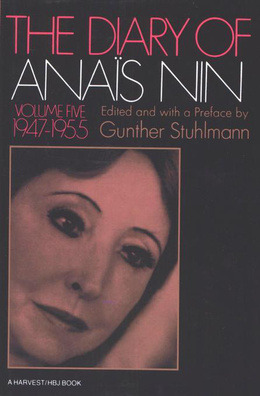
I worked my way through Volumes 1-6 of the Diary of Anais Nin this year, which I found to be lyrical, compelling, idea-inspiring. Like friendship. The later volumes aren’t as full of events, emotional upheavals and insights. Volume 6, for example, is padded out with her correspondence with writers in prison, which I started to skim through.
(14) Portnoy’s Complaint (1969) – Philip Roth

Roth was quite brilliant for choosing the psychotherapeutic rant as his form – it allowsfor unlimited quantities of narcissism and the most intimate, embarrassing & shockingly honest admissions. As a reader, you can’t say you didn’t know what you were in for. I liked that Portnoy had some insight, being in his 30s, I was afraid it would all be from the blind-and-horny-young-man point of view. Rich, rhythmic language, like a meaty stew. Daring use of exclamation marks. I was needing to read something risk-taking & this hit the spot.
The funniest part to me was his description of his shiksa girlfriend’s Midwest home, Portnoy’s surprise & delight at the normalcy of it. Again, my only quibble was with the ending – attempted rape of a woman who looks like his mother, in Israel, was not only super heavy-handed in the psychoanalytic sense, but also fully disconnected me from Portnoy, whom I had sort of gotten to like for his honesty & lustiness. I left the book with a feeling of distaste, violence.
(15) Leaving the Atocha Station (2011) – Ben Lerner
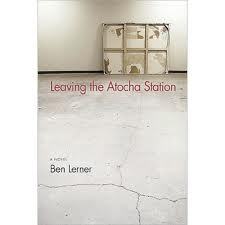 Young American poet in Madrid. Some say this is thinly disguised autobiography – I found myself actually not being that curious either way, which is not always the case. I really liked the internal quality of the novel, the absolute subjectivity. You get the feeling that the people the narrator interacts with actually like him better and think he’s smarter, more interesting & socially adjusted than he gives himself credit for (doesn’t help that he’s high & paranoid most of the time). I also loved the way he described the fog of living in a country where you halfway speak the language, how you have multiple interpretations for what someone could be saying to you, and how all of those versions might be wrong. My only quibble was with the ending, it’s all tied up into a neat bow, not sure what we as readers are intended to be left with. (I passed it along to a friend, not a keeper on the shelf, but worth passing along.)
Young American poet in Madrid. Some say this is thinly disguised autobiography – I found myself actually not being that curious either way, which is not always the case. I really liked the internal quality of the novel, the absolute subjectivity. You get the feeling that the people the narrator interacts with actually like him better and think he’s smarter, more interesting & socially adjusted than he gives himself credit for (doesn’t help that he’s high & paranoid most of the time). I also loved the way he described the fog of living in a country where you halfway speak the language, how you have multiple interpretations for what someone could be saying to you, and how all of those versions might be wrong. My only quibble was with the ending, it’s all tied up into a neat bow, not sure what we as readers are intended to be left with. (I passed it along to a friend, not a keeper on the shelf, but worth passing along.)
(16) How to Be a Woman (2012) – Caitlin Moran
Extremely funny, bawdy, straight-talking in a most English way. T horoughly enjoyable if you disregard her lofty claims for the book. Namely, that it’s a sorely needed feminist treatise on pop culture & the everyday conundrums of femininity (such as what to wear). Especially if Lady Gaga is the absolute height of feminist achievement (as she claims, ugh). There’s in fact extensive writing & thinking on this stuff all over the internet (though maybe not written by someone of her generation).
horoughly enjoyable if you disregard her lofty claims for the book. Namely, that it’s a sorely needed feminist treatise on pop culture & the everyday conundrums of femininity (such as what to wear). Especially if Lady Gaga is the absolute height of feminist achievement (as she claims, ugh). There’s in fact extensive writing & thinking on this stuff all over the internet (though maybe not written by someone of her generation).
However, she is quite lovable. The chapter on breasts and what to call them, for example, is hilarious. I am also 100% with her thinking on the wedding-industrial complex.
(17) Tete-a-Tete (2005)- Hazel Rowley
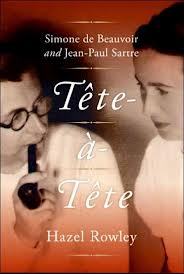 Fascinating account of the lifelong relationship between Simone de Beauvoir & Jean-Paul Sartre, spanning their complicated private lives, literary works and the great wave of the 20th centruy. This was my second read, otherwise would be higher on the list – my first read transformed my perspective for a while.
Fascinating account of the lifelong relationship between Simone de Beauvoir & Jean-Paul Sartre, spanning their complicated private lives, literary works and the great wave of the 20th centruy. This was my second read, otherwise would be higher on the list – my first read transformed my perspective for a while.
18) Freedom (2011) – Jonathan Franzen
Positive stuff
 -Absolutely absorbing. He plants information masterfully, weaves the story in a way that keeps you reading (from the first sentence you know there’s a downfall to come). Franzen sticks to his mantra of being a friend to the reader – a feat to create a literary page-turner.
-Absolutely absorbing. He plants information masterfully, weaves the story in a way that keeps you reading (from the first sentence you know there’s a downfall to come). Franzen sticks to his mantra of being a friend to the reader – a feat to create a literary page-turner.
-Ambitious in its reach. A successful, rich depiction of the present time in the USA and also a family saga. I was wowed by the scope of subjects he covers & the level of detail.
Negative stuff (spoiler alert)
-It unravels in the last 150 pages or so & that put me off the book as a whole. Endings are so hard!!
First, because it becomes completely ranty & you start to feel the voice author grousing through his characters (see a 3-page dialogue involving a fight between neighbors about keeping cats inside in order to spare birds in the wild). As much as I am sympathetic to urgent environmental matters it started to feel like a lecture & pulled me away from the narrative. Second, the characters and scenarios become too much to swallow: a college kid buying army supplies in Paraguay with minimal Spanish for Iraqi contractors; a young woman (Connie character) whose only ambition from age 12 is to be with this guy – no more depth to her than that (think how much young women change between ages 12-23); the death of Lalitha seemed like a conventional plot twist, etc.
-Walnut Surprise is a terrible name for a blues-country, dark-horse hit band.
-While I appreciate the gesture of creating a happy ending for all (including all of Patty’s dysfunctional family), that again felt a bit forced .
-As with The Corrections, his overall vision of the human heart, human motivations as revealed in the novel made me uncomfortable. A major theme was competition, that competitiveness drives every relationship. It was interesting to look at the world this way while I read the book (including assessing my own relationships), but ultimately it’s not a reduction I want to live by.
In 2012, I read 27 books. Here they are in order from least to most inspiration, pleasure, ideas and word-love I derived from them. This is the bottom of the list, top picks to come!
(19) How Fiction Works (2008) – James Wood
 Coherent, snappy, reader-friendly literary criticism: aaah, sweet relief. James Wood, I will always love you for brilliantly taking down Paul Auster and Michel Houellebecq as overrated in the pages of The New Yorker, no less. Though minus point for how little of an impact this treatise ultimately made on me. (I realize this could also be because the internet has rotted my brain.) The only thing I can recall several months after reading it is that it convinced me to read more Saul Bellow. I guess that could be counted as a success.
Coherent, snappy, reader-friendly literary criticism: aaah, sweet relief. James Wood, I will always love you for brilliantly taking down Paul Auster and Michel Houellebecq as overrated in the pages of The New Yorker, no less. Though minus point for how little of an impact this treatise ultimately made on me. (I realize this could also be because the internet has rotted my brain.) The only thing I can recall several months after reading it is that it convinced me to read more Saul Bellow. I guess that could be counted as a success.
(20) Bright Lights, Big City (1984) – Jay McInerney

Fluffier than I expected, though some parts definitely made me laugh. Reminded me ofJonathan Ames (The Extra Man), except that I enjoyed Ames much more: more meat, more heft, more risks, more heart. Not convinced the second-person narrative did anything that first-person narrative can’t do.
(21) Is Everyone Hanging Out Without Me? (And Other Concerns) (2011) – Mindy  Kaling
Kaling
Some funny stuff, though not recommended if you aren’t prepared to deal with her self-obsessed persona. I would skip the accounts of her childhood (not so interesting & not good writing), but enjoyed her take on show business, early years in NYC, etc.
(22) Reading Lolita in Tehran (2003) – Azar Nafisi
My favourite parts were when Nafisi was writing as literature professor – intriguing 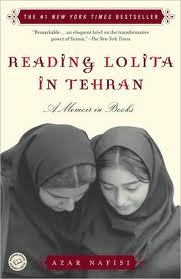 interpretations of The Great Gatsby, Daisy Miller & Lolita, and their bearing on her and her students’ lives in Iran. I also learned about Iranian history, a fascinating, nightmarish personal account, the upheaval that has occurred in the past 40 years. The style was a bit formulaic sometimes (as in “I can feel the snow of Tehran as I write, I can see my students’ faces as I type these words”) & I started to get all of the characters mixed up, felt like they weren’t drawn distinctly enough, so I wasn’t emotionally drawn in.
interpretations of The Great Gatsby, Daisy Miller & Lolita, and their bearing on her and her students’ lives in Iran. I also learned about Iranian history, a fascinating, nightmarish personal account, the upheaval that has occurred in the past 40 years. The style was a bit formulaic sometimes (as in “I can feel the snow of Tehran as I write, I can see my students’ faces as I type these words”) & I started to get all of the characters mixed up, felt like they weren’t drawn distinctly enough, so I wasn’t emotionally drawn in.
(23) In a Perfect World (2009) – Laura Kasischke
 Speculative fiction about a plague, but told from an oblique perspective – that of a slightly depressed, newly married flight attendant forced into mothering her evil stepchildren in a midwest backwater. Wonderful creepy details about how American society deals with the plague (obsessive reporting on celebrity deaths, white helium balloons are anonymously released in memory of victims). Also a dark fairytale quality to it, atmospheric.
Speculative fiction about a plague, but told from an oblique perspective – that of a slightly depressed, newly married flight attendant forced into mothering her evil stepchildren in a midwest backwater. Wonderful creepy details about how American society deals with the plague (obsessive reporting on celebrity deaths, white helium balloons are anonymously released in memory of victims). Also a dark fairytale quality to it, atmospheric.
However, the heroine’s passivity drove me crazy. There are at least five scenes in which someone says or does something awful to her & she’s too stupefied to react… Ultimately it feels like a problem with the mechanics of the book rather than an active choice made by the author.
 (24) Mortal Danger (2008) – Anne Rule
(24) Mortal Danger (2008) – Anne Rule
Trashy true crime book, provides all the dirty details of real-life murder cases. (I’m including ALL of the books I read in this list!) The first case is actually a prettyinteresting account of how a relationship can become abusive over time & a woman who never imagined herself as “one of those women” finds herself trapped.
(25) The English Patient (1992) – Michael Ondaatje

This was a bit force-fed (force-read) for me. The only book I had to read on a long plane ride to the Middle East. I felt a bit like Elaine in that one Seinfeld episode. Many lyrical, lovely quotable passages, Ondaatje is clearly a poet, but on the whole I resisted entering this world because it felt so contrived, precious. (For example, the author kept mentioning the characters were in a collapsing Italian villa, through various romantic iterations; proof of passion is a woman stabbing a man with a fork, cracking a plate on his head. But in a way, it’s supposed to make you feel there’s real passion, real magic you don’t have access to.)
(26) Henry and June (1986) – Anaïs Nin
 Completely disappointing and actually a little boring after reading Anaïs Nin’s rich, witty, philosophical & idea-packed diaries. This book contains only extractions from her diary that deal with her affair with Henry Miller. Consequently, it’s repetitive and a one-sided vision of a deep-thinking woman- makes her seem singularly obsessed with the affair & its sexual aspects, when there was so much else going on, including within their affair (talks about writing, aesthetics, etc.). If you’re interested in it for the sexy bits, go straight to her erotica (Delta of Venus & Little Birds).
Completely disappointing and actually a little boring after reading Anaïs Nin’s rich, witty, philosophical & idea-packed diaries. This book contains only extractions from her diary that deal with her affair with Henry Miller. Consequently, it’s repetitive and a one-sided vision of a deep-thinking woman- makes her seem singularly obsessed with the affair & its sexual aspects, when there was so much else going on, including within their affair (talks about writing, aesthetics, etc.). If you’re interested in it for the sexy bits, go straight to her erotica (Delta of Venus & Little Birds).
(27) Anais Nin: A Biography (1995) – Deirdre Bair
Read this after much hesitation, but my 2012 obsession with Anais Nin eventually forced my hand. I didn’t trust Bair as a biographer after reading her book on Simone de Beauvoir. Although she writes that she has thought a great deal about remaining  impartial as a biographer there are loads of value judgments in both biographies. It’s not that I needed her to like Nin. It’s that she writes with an active distaste for her subject. No further evidence is needed than her chapter dealing with Nin’s illness and death. While she sums up years-long relationships, books Nin wrote, and other important events in a a paragraph or so, she spends several pages on Nin’s cancer, beginning with the sentence, “The cancer started in the vagina” and details her extensive, years-long suffering. This to me was a passive-aggressive way to mete out justice for Nin’s very active and complicate sex life. No thoughtful assessment of Nin’s complicated relationship with the women’s liberation movement, no real assessment or even description Nin’s life work, least of all the diaries (only details about how she screwed over her loyal publisher for their publication & conspired to get them published by any means possible). No thoughts about what it meant to be a woman writer in her time or even the boldness with which she lived out her sexuality as a woman in a repressive time.
impartial as a biographer there are loads of value judgments in both biographies. It’s not that I needed her to like Nin. It’s that she writes with an active distaste for her subject. No further evidence is needed than her chapter dealing with Nin’s illness and death. While she sums up years-long relationships, books Nin wrote, and other important events in a a paragraph or so, she spends several pages on Nin’s cancer, beginning with the sentence, “The cancer started in the vagina” and details her extensive, years-long suffering. This to me was a passive-aggressive way to mete out justice for Nin’s very active and complicate sex life. No thoughtful assessment of Nin’s complicated relationship with the women’s liberation movement, no real assessment or even description Nin’s life work, least of all the diaries (only details about how she screwed over her loyal publisher for their publication & conspired to get them published by any means possible). No thoughts about what it meant to be a woman writer in her time or even the boldness with which she lived out her sexuality as a woman in a repressive time.
Blargh. I hated it. Only useful to gain some details about who some of the people in the diaries are, in particular her husband & their unusual lifelong relationship (completely omitted from the published diaries).
Books abandoned in 2012:
Time and Again (1970) – Jack Finney
I’ve had several people tell me this gives a vivid account of New York City in the early 20th century, but the writing style was so flat! It’s supposed to be light reading, too… Second time I’ve tried to read this, can’t say I didn’t try.
Murphy – Samuel Beckett
Who brings an experimental depressing Beckett novel to the beach? Not sure when the right time to read this would be, but beachside in August is not it…
Incest – Anais Nin
The second “unexpergated” volume of her diaries, after Henry & June, published by her husband after she died. Again, disappointing after reading the versions she edited & published in her time. Only the personal life is here, so she comes off as rambling, obsessive, shallow (whereas the 1960s diaries reveal a rich inner life). Couldn’t finish it.
The use in used books, the value of the bookstore
“But standing inside of a bookstore, the sense of being surrounded by books, picking one up, wandering to another section, is to me, a bodily metaphor for the act of reading, or of thinking, that, because of its physicality, cannot be replaced by surfing the web.” (Title links to source)